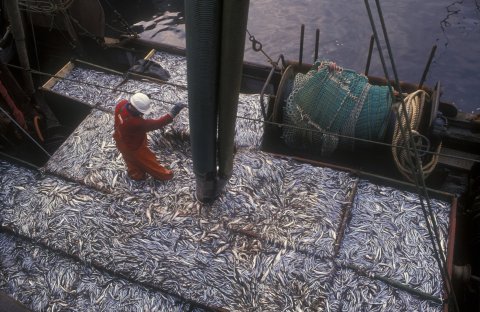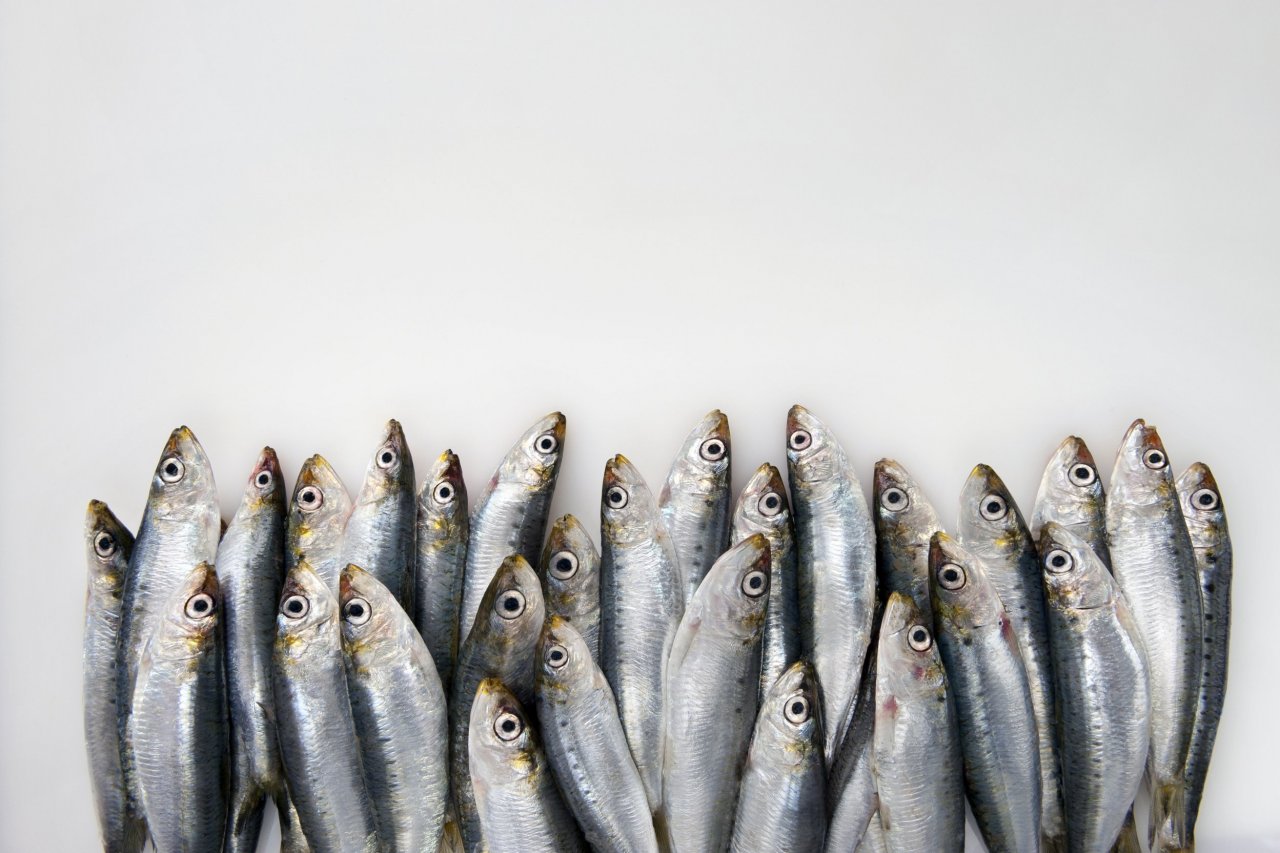Sylvia Earle fell in love with the ocean as a teenager in the 1950s. She marveled at the wealth of aquatic life in the Gulf of Mexico, near her family's home in Clearwater, Florida. She was entranced by the inquisitive grouper fish, playful shrimp and even the vastly underrated plankton, which produce most of the Earth's oxygen.
Earle grew up to have a remarkable career as an oceanographer. In 1970, she made headlines when she led the first all-female team of aquanauts on a two-week expedition, living underwater in a module off the Virgin Islands. She became the first female chief scientist of the National Oceanic and Atmospheric Administration; set diving records and spent more than 7,000 hours underwater; helped start a couple of companies that make submersibles; and she is now a National Geographic explorer-in-residence. But over the past 40 years, she's also had to watch the ocean and the life in it suffer dramatically.
Since 1950, Earle says, "we've seen greater changes in the ocean than in all preceding human history." One 2003 study found that the amount of large oceanic fish had declined 90 percent in the preceding half-century. And a 2014 United Nations Food and Agriculture Organization report estimates that 29 percent of the world's fisheries are overfished, at a "biologically unsustainable level."
Since Earle spent that time in the coral in the Virgin Islands, Caribbean reefs have declined by half, driven in large part by the dying out of sea urchins and parrotfish, which eat algae that, when allowed to grow unchecked, block coral's ability to photosynthesize. Both sea urchins and parrotfish have been decimated by overfishing.
In large part, all this is because fish is an increasingly big business. Almost nobody ate tuna in the 1950s, for example; it was considered a trash fish, says Earle in an interview at the 2015 Curiosity Retreat, a conference featuring scientists and other speakers in southwest Colorado. After eating raw fish and sushi became more popular in Japan in the 1960s, in part as a result of better refrigeration, the practice spread to the U.S. and other parts of the world in the '70s and '80s; American sushi restaurants now bring in $2 billion a year. A large percentage of the fish eaten in the U.S. today was not used as a food source even 50 years ago.
Earle likens seafood to "aquatic bushmeat." Bushmeat typically refers to the consumption of a range of land-dwelling wildlife—from lizards to bats to monkeys—that is threatening biodiversity in Africa and Southeast Asia. Earle says we need to start thinking about seafood in a similar manner: "It's crazy how we lump these wondrously diverse animals into one little four-letter term: fish." Earle points out that many people eat fish without thinking about what species they're ingesting, where it came from or how it was harvested—and that many of these creatures are wild animals, violently plucked out of their watery homes and plopped onto our plates. She insists it's no different from bushmeat in the way it harms the ecosystem.
Earle says that if people are to eat fish, they should "do it with great respect: Find out where the fish are from.… But most important, think of these fish as wild creatures. You might be repelled if you saw eagle, owl, snow leopard or rhino on the menu."
Not everyone agrees. Brett Tolley, a community organizer with the Northwest Atlantic Marine Alliance, a nonprofit organization working with fishing communities on market and policy issues, says that the idea of fish being "aquatic bushmeat" is oversimplified. Fish are an altogether different beast than, say, hippos or gorillas, and there are many fishermen who follow sustainable fishing practices. Ed Barrett, a fisherman from Marshfield, Massachusetts, says it's "environmental propaganda." Any even many environmental groups see nothing wrong with fishing that's done in a responsible manner.
But it's incredibly difficult to track down the provenance of a piece of fish. The only relevant law that governs seafood labeling is a U.S. Department of Agriculture mandate that seafood be labeled with its "country of origin," says Tolley. This law is ineffective, though, because processed seafood—a category that includes more than 50 percent of all fish sold in the U.S.—is exempt, Food & Water Watch reports. The law also requires that companies state only the last place the fish passed through. So fish caught in the U.S. but exported for processing to China, and then for further processing in Indonesia—a common occurrence—would be labeled as from Indonesia, if it's labeled at all, says Carl Safina, a marine ecologist and environmental writer.

"Fish is unlike any other kind of meat: Not only is a lot of it wild, but it's often misrepresented," says Safina. That's why he started a well-regarded seafood guide that provides detailed information about each fish species, and gives it either a green, yellow or red rating, like a traffic light. Green means the fish is relatively abundant and harvesting it does little harm; yellow means eating the species may be problematic; and red means it should be avoided. Bluefin tuna is a deep red. "When we started the list in 1998, fish was just a piece of fish, like a slice of bread," he says. "There was really no place to go for information on individual species, but now anybody who is interested can look up this information."
Fishermen and environmentalists generally agree that if one is to eat fish, choosing abundant local species is the best way to go. Unfortunately, that doesn't usually happen. Consumers want their Nova Scotian swordfish or their Japanese bluefin tuna, even if they live in Phoenix. That demand has led to industrial-scale fishing across the globe that harvests about half of the world's fish, and has led to the depletion of many types of fish—often species that aren't even being targeted. This is accomplished by fishing vessels like super seiners—huge ships that surround tuna and other species with large circular nets that close at the bottom and pull everything inside out of the water. Or the "longline," thousands of baited hooks spanning up to 40 miles of line are trawled behind a ship, snagging more than 80 species of nontarget animals like sea turtles, marlin and bluefin tuna, according to the Pew Charitable Trusts, an environmental and advocacy group. Trawling, in which nets are dragged on the seafloor, can also damage deepwater corals and destroy fish habitat.
Meanwhile, ineffective laws or lack of regulation in general remains a huge problem, especially in Africa and Asia, which are "out of control, and a disaster," Safina says. In those locations, illegal and reckless fishing takes places regularly without any consequences for those who do it, he says. (On the other hand, regulation in the U.S. and Europe is becoming tighter, says Michele Kuruc, vice president of ocean policy of the World Wildlife Fund, and stocks of some fish off the shores of these areas, such as cod in the North Sea, are growing.)
Much of the problem comes down to marketing and perception. While fish is nutritious, it's not necessary for a healthy diet—despite the breathless media claims. "I believe the medical profession has been irresponsible in their recommendations" that promote fish eating, says Boyce Thorne-Miller, a science policy adviser to the Northwest Atlantic Marine Alliance. "They certainly have not taken the health of marine ecosystems into account, and I don't believe they've even taken the best interest of their patients into account." There may be downsides, he points out, to eating fish likes large tuna or swordfish that contain significant quantities of mercury, a toxic heavy metal.
For example, there are plenty of other sources of omega-3 fatty acids, a healthful component of fish touted by doctors that actually derive from algae, Thorne-Miller says. Several companies now produce omega-3-rich products made from algae, which are free of contaminants found in fish, Earle says. These products also won't drive "industrial-scale overfishing of forage fish species so critical to marine food webs" in order to get at fish oil, Thorne-Miller adds.
Earle argues that if people really thought about what they were doing—killing and eating wild animals that each have unique personalities—they might change their behavior. She mentions a time in the 1970s when, from underwater, she filmed fish being netted. "The fish in the net—they are panicked," Earle says. "We've become hardened in our view of pain that we inflict gratuitously on fish. We don't think of them as creatures worth noticing."
Correction: This article incorrectly stated the percentage of world's fisheries that are overfished; it has been corrected.


















